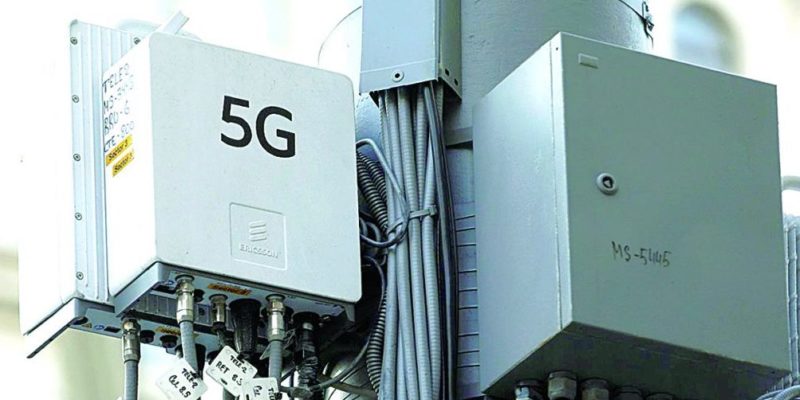The Nigerian Communications Commission (NCC) has successfully auctioned slots of spectrum in the 3.5GHz spectrum band for deployment of 5G services in Nigeria to MTN Nigeria and Mafab Communications Limited. It plans to auction additional slots later this year in December.
As operators begin to flag off commercial launch of 5G services, the debate on the health hazard on telecommunications generally and 5G specifically is bound to once again, occupy the centre stage.
RELATED: Base stations are not harmful to humans, says NCC to Nigerians
The NCC at several of its consumers’ sensitization forums has been addressing the misinformation about Electromagnetic Frequency (EMF) radiation emanating from telecommunications infrastructure which the regulator asserted was not harmful based on studies conducted by the International Telecommunication Union (ITU), World Health Organisation (WHO) and the International Commission for Non-Ionising Radiation Protection (ICNIRP).
Do radiations from mobile phones, base stations affect human health? For good reasons, the NCC being a proactive regulator has remained at the forefront of deepening awareness on this debate. Months back, the Commission hosted the second West African Conference on EMF Exposure and Health with the theme: ‘EMF in a Highly Connected Society: Understanding the Myths and Realities.’
The conference brought together telecom subscribers, public health and safety practitioners, environmentalists, legislators and advocacy groups among several other stakeholders to address concerns around Electro-Magnetic Fields (EMF) emitted by telecoms base stations on humans.
The NCC used the conference to provide informed opinions and research findings on the issue and helped to lay the basis to establish a common EMF policy in the West African sub-region as all countries within the region face similar challenges.
Possible impact of mobile phone radiation on human health is of interest to people around the world because mobile telephony is now commonplace around the world. There are currently more than 6 billion subscriptions worldwide. In Nigeria, connected mobile phones are in excess of 135 million. There are also about 29,000 Base Transceiver Stations (BTS or simply called Base Stations).
Mobile phones use electromagnetic radiation in the microwave range. Other digital wireless systems, such as data communication networks, produce similar radiation. Other wireless networks that allow high-speed internet access and services, such as wireless local area networks (WLANs), are also increasingly common in homes, offices, and many public areas (airports, schools, residential and urban areas).
As the number of base stations and local wireless networks increases, so does the RF exposure of the population. Recent surveys have shown that the RF exposures from base stations range from 0.002% to 2% of the levels of international exposure guidelines, depending on a variety of factors such as the proximity to the antenna and the surrounding environment. This is lower or comparable to RF exposures from radio or television broadcast transmitters.
In 2011, International Agency for Research on Cancer (IARC) classified mobile phone radiation as Group 2B – possibly carcinogenic (not Group 2A – probably carcinogenic – nor the dangerous Group 1). That means that there “could be some risk” of carcinogenicity, so additional research into the long-term, heavy use of mobile phones needs to be conducted.
The WHO added that “to date, no adverse health effects have been established as being caused by mobile phone use. Many countries are benchmarking the guidelines of the WHO and the International Telecommunications Union (ITU) to put in place measures to minimize exposure to their citizens as a precautionary approach. But up to now, there is still no scientific proof that EMF undermines public or personal health.
Many scientific studies have investigated possible health symptoms of mobile phone radiation. These studies are occasionally reviewed by some scientific committees to assess overall risks. A 2007 assessment published by the European Commission Scientific Committee on Emerging and Newly Identified Health Risks (SCENIHR) concludes that the three lines of evidence, viz. animal, in vitro, and epidemiological studies, indicate that “exposure to RF fields is unlikely to lead to an increase in cancer in humans”.
The WHO has a similar conclusion in one of its many research works on RF signals. One of such conclusions states: “From all evidence accumulated so far, no adverse short- or long-term health effects have been shown to occur from the RF signals produced by base stations. Since wireless networks produce generally lower RF signals than base stations, no adverse health effects are expected from exposure to them.”
International exposure guidelines have been developed to provide protection against established effects from RF fields by the International Commission on Non-Ionizing Radiation Protection (ICNIRP, 1998) and the Institute of Electrical and Electronic Engineers (IEEE, 2005). The guidelines caution that: “National authorities should adopt international standards to protect their citizens against adverse levels of RF fields. They should restrict access to areas where exposure limits may be exceeded.”
Based on all these global findings and its own local efforts, the NCC’s conclusion is that “from present level of scientific knowledge, radiation from telecom base stations or the use of mobile phone is unlikely to cause adverse health effects.”
The Commission allows BTS to be deployed by operators in Nigeria based on the ICNIRP guidelines and standards for the installation of such equipment. Such permits are also based on similar guidelines referencing models adopted by the ITU and the WHO.
The Commission has chosen the pathway to work with stakeholders across sectors to keep creating awareness on EMF within human communities as part of the precautionary measures to allay public concerns.
As 5G rollout becomes part of our national infrastructure skyline, the Commission remains committed to raising awareness on EMF radiation from telecommunications infrastructure.






























